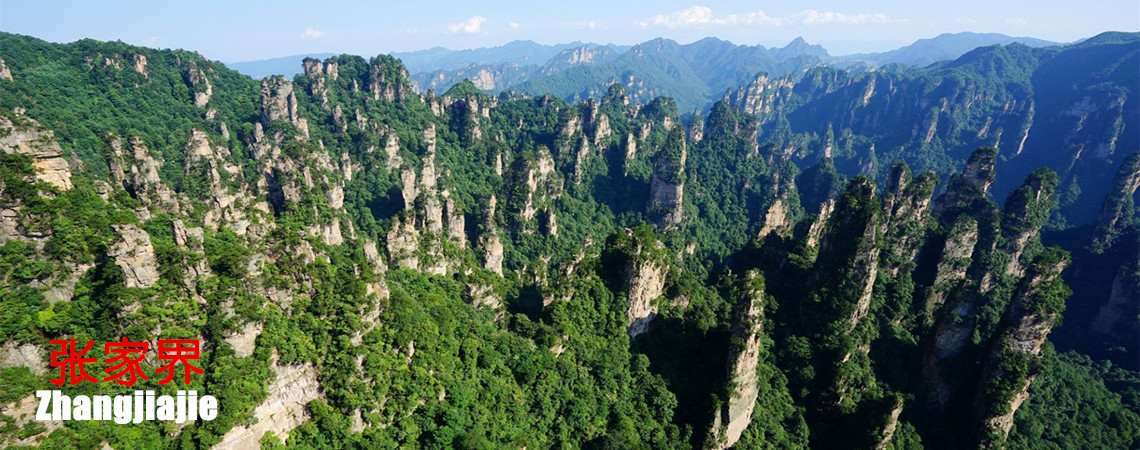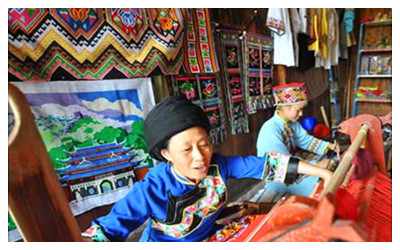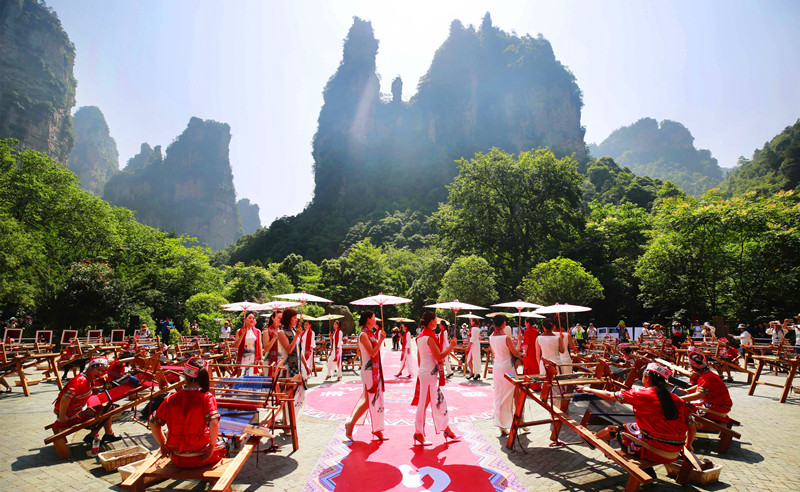Skype: neodalle-travel
Tel: +86 135 7447 2266
E-mail: sales@visitaroundchina.com

 Tujia Brocade, known as Xilankapu,has a history of 2,000 or more years. It was first worn in the Qin and Han Dynasty imperial palaces.It was said to be the royal tribute during the Qin (221 BC - 206 BC) and Han (206BC - 220) dynasties. It is a combination of weaving and embroidery with a flavor of primitive simplicity and deep folk tradition.
Tujia Brocade, known as Xilankapu,has a history of 2,000 or more years. It was first worn in the Qin and Han Dynasty imperial palaces.It was said to be the royal tribute during the Qin (221 BC - 206 BC) and Han (206BC - 220) dynasties. It is a combination of weaving and embroidery with a flavor of primitive simplicity and deep folk tradition.Feature of Tujia Brocade
“Xilan” in the Tujia language means “bedspread” and “Kapu” means “flower”. Xilankapu was hence originally a flower brocaded bedspread, but was also fashioned into cushion covers and pillow cases, among other things. Xilankapu is hand woven on a narrow lathe loom with a red, blue, black, white and yellow thread warp and multi-colored silk, cotton or wool weft.
There are more than 200 Xilankapu patterns, each significant in its own way. The brocade designs are abstract images of real-life objects in contrasting colors, all highly decorative. In contrast to palace brocades, Tujia brocade was made in the countryside and used by farmers. It consequently has a strong folklore flavor that often provides insight into the ancient China totem.
Traditional patterns fall under the three broad headings of natural images, geometric patterns and language that relate to Tujia daily life. They include tiger stripes, leopard and deer spots, colorful golden pheasant feathers, clouds, waves and arched bridges. There are also images of butterflies alighting on peonies, double phoenixes facing the sun, magpies singing on plum trees, and bridal entourages to the bridegroom’s home. Master Xilankapu handicraftsman can create designs without a pattern.
Weaving Xilankapu is an essential skill for Tujia girls. They learn it from their mothers or elder sisters from the age of 11 or 12 years old. Both the number of works they produce and their weaving technique are considered indicators of character as well as skill. Xilankapu is main aspect of the Tujia dowry. The Xilankapu wedding dress a Tujia maid finishes the night before her wedding is the most valuable and beautiful object she will ever own.
Zhangjiajie Pretty-girl Tujia Brocade Museum

Zhangjiajie Pretty Girl Tujia Brocade Company is the largest Tujia brocade production base in China. It integrates inheritance, research and development, production, sales and experience, allowing you to experience the real Tujia culture.
Add: Gaoyun Road, Wulingyuan District,Zhangjiajie City
Tel: 0744-5908999
Opening Hours:08:00-18:00
 Ask Questions ?
Ask Questions ?